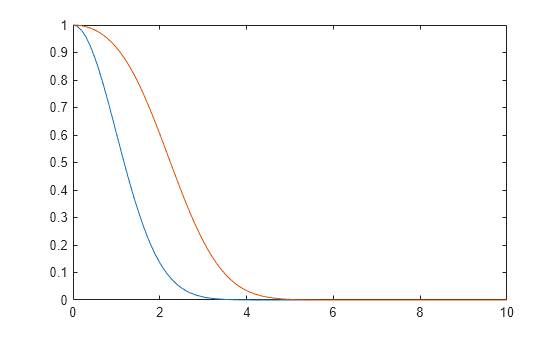marcumq
Generalized Marcum Q-function
Description
Q = marcumq(a,b)a and argument b. Use this syntax to calculate
the special case of the generalized Marcum
Q-function of order m with
m = 1. For the definition of the generalized Marcum
Q-function, see Generalized Marcum Q-function.
Examples
Input Arguments
Output Arguments
More About
Algorithms
To compute the value of the generalized Marcum Q-function for the specified inputs, this function uses a calculation based on a method illustrated by Shnidman in [3]. This paper describes two error criteria: a relative error criterion and an absolute error criterion. This function uses the absolute error criterion.
References
[1] Cantrell, P., and A. Ojha. “Comparison of Generalized Q-function Algorithms (Corresp.).” IEEE® Transactions on Information Theory 33, no. 4 (July 1987): 591–96. https://doi.org/10.1109/TIT.1987.1057323.
[2] Marcum, J. “A Statistical Theory of Target Detection by Pulsed Radar.” IEEE Transactions on Information Theory 6, no. 2 (April 1960): 59–267. https://doi.org/10.1109/TIT.1960.1057560.
[3] Shnidman, D.A. “The Calculation of the Probability of Detection and the Generalized Marcum Q-function,” IEEE Transactions on Information Theory 35, no. 2 (March 1989): 389–400. https://doi.org/10.1109/18.32133.
Extended Capabilities
Version History
Introduced in R2008a
